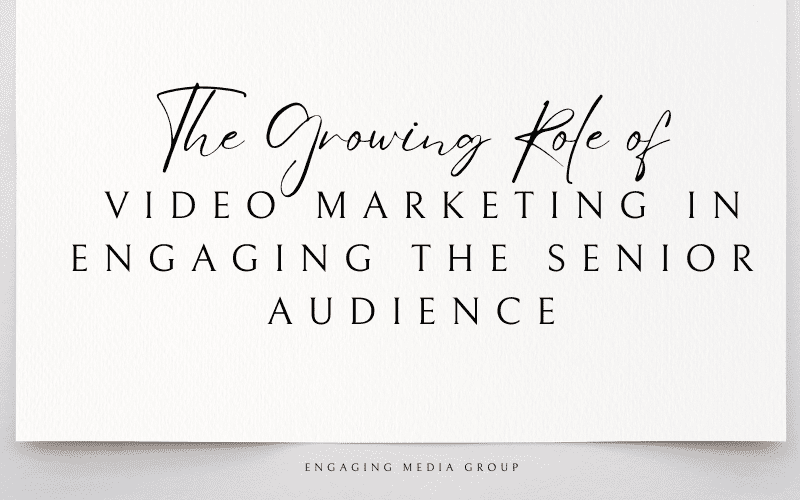In today’s digital world, video marketing is no longer just a trend—it’s a must-have. And while many businesses assume that older adults aren’t tuning in, the truth tells a different story. Seniors are watching more videos online than ever before. In fact, according to AARP, adults over 50 spend nearly six hours a day online, and video is one of their most-consumed types of content.
If your senior-focused business hasn’t tapped into the power of video yet, you’re missing a big opportunity. At EngAging Media Group, we help companies like yours boost brand visibility and connect authentically with the senior community through strategic digital marketing—including powerful, personalized video content.
In this post, we’ll explore why video is becoming essential in senior marketing, how to do it right, and what mistakes to avoid.
Why Video Works So Well with Seniors
- It’s Easy to Consume
Video is more accessible than reading through long blocks of text. For many older adults who may experience changes in vision or cognitive processing, watching a video can be more engaging and easier to understand. - It Builds Trust
A friendly face on camera builds more trust than an ad with just text and photos. Seeing and hearing someone speak directly creates a sense of familiarity, which is crucial for building credibility with seniors and their families. - It Creates an Emotional Connection
Seniors aren’t just looking for services—they’re looking for connection. A well-crafted video can stir emotion, show compassion, and reflect your business’s values in ways that static content simply can’t. - It Enhances Recall
According to studies, viewers retain 95% of a message when they watch it in a video compared to just 10% when reading it in text. That’s a major edge when trying to stand out in a crowded
Common Mistakes to Avoid
- Talking Down to Your Audience
Seniors are experienced, smart, and tech-savvy. Don’t assume they need things “dumbed down.” Keep your tone respectful, informative, and inclusive. - Ignoring Accessibility Features
Always include captions or subtitles. Offer transcripts where possible. Make sure your video player works with screen readers and other assistive tools. - Using Fast Cuts or Distracting Effects
Keep transitions smooth and avoid fast-moving graphics or music that could be overwhelming. Clear visuals and a relaxed pace are more effective. - Failing to Track and Adjust
Once your video is live, monitor how it performs. Are viewers watching until the end? Are they taking the next step? Use this data to refine your approach. - Overloading the Message
Stick to one main idea per video. Too much information can confuse the viewer or dilute your call to action.
Examples of Video Content That Works
- A walk-through tour of your senior living facility with staff introductions
- A quick tip series on senior wellness or caregiving advice
- Client spotlight videos sharing a personal story of transformation
- Educational explainers on how your services work
- Short holiday greetings or behind-the-scenes celebrations
All of this help to humanize your brand and keep your business top of mind for seniors and their families.
Final Thoughts
Video marketing is no longer optional—especially for businesses serving seniors. It’s a powerful, accessible, and emotionally resonant tool that helps you stand out, build trust, and drive results.
By keeping your content simple, authentic, and accessible, and by avoiding common pitfalls, you can create video content that seniors actually want to watch—and act on.
Ready to see how video (and a smarter digital strategy) can elevate your brand?
Reach out to EngAging Media Group today at hello@engagingmediagroup.com to schedule your FREE marketing consultation. We’ll give you a full assessment of your current strategy—and send you actionable video and content tips you can start using right away.
Let’s build something impactful—together.

